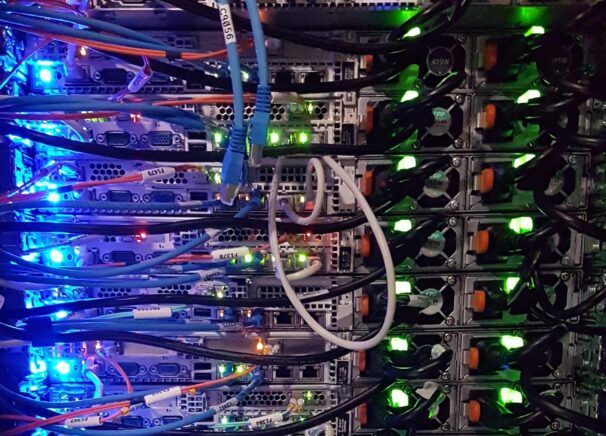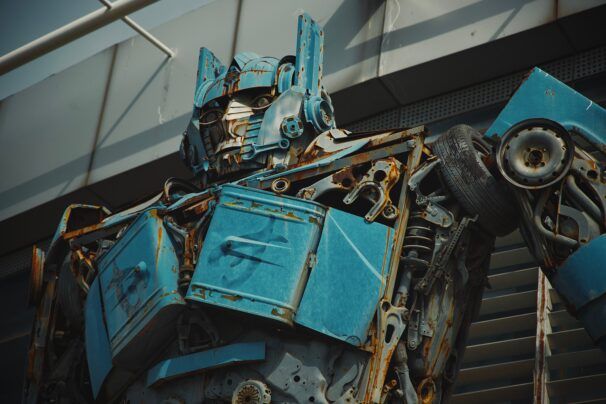Why AI on the Internet isn’t actually big news
Discover how artificial intelligence and machine learning have been used on the Internet for a very long time in our guest post written by Jason Trott, Lecturer in Microcredentials at The Open University.

Time and again, people think the Internet is shrouded in mystery, with many unaware of its background, how it works, and the systems used to run it.
To dispel some myths, there aren’t networking nerds sitting in a troll-like cave, tapping out commands, nor a coven of wizardly folk, chanting spells to keep your data safe.

A brief history of AI on the Internet
Instead, Internet engineers have been using a basic form of artificial intelligence (AI) and machine learning for an exceptionally long time, actually, since the late 1980’s.
Routing protocols
To explain – we call this form of simple AI and machine learning a routing protocol. Routing is the process, where we direct network communication, known as traffic, from one networked system to another. Kind of like the signal engineers on the railway network. However, this operates at an intensely higher speed.
We often use the term protocol in internet engineering to describe how communication will be sent between different systems. Reading this article, you are using HTTPS (hypertext transfer protocol secure), but when it comes to routing protocols, we use terms like RIP (routing information protocol), OSPF (open shortest path first), BGP (border gateway protocol), EIGRP (extended interior gateway routing protocol) and ISIS (intermediate system to intermediate system). None of these terms are very catchy and they’re probably not too easy to remember, either.
Internet reliability
Having reliable internet is everything – while you may think otherwise. Often the issues you encounter are with your provider or local cell tower network. There are seldom any issues with the core internet, which is busy routing between tens of thousands of systems at all times.
Routing protocols can be designed to work autonomously, learning what is happening on the network – watching for outages, high traffic volume and other potential issues. We set the rules, and they watch the system and keep it operational for us.
So, if we were to run up to an operational internet router and pummelled it with a large sledgehammer (we do not advise this, simply giving an extreme example), there would be an immediate disruption.
However, other remote yet connected devices would immediately spot the outage and start attempting to reconnect. Once they realise that there is never going to be any future communication, they attempt to reroute the network traffic and relearn the system to discover if any alternate routes now exist.

We often use terms like route maps, route summarisation, redistribution, route cost, hold-down timers, hello packets, dead timing, and timeout. The network engineer manipulates these variables amongst many other factors to ensure we all enjoy using a reliable internet connection.
Machine learning technologies on the Internet
With machine learning, we often encourage systems to discover and understand a given environment in real time. Our AWS Machine Learning Foundations microcredential explores how machine learning algorithms are developed to discover new information from already available data.
The AI in routing protocols is comparatively simpler than modern machine learning technologies – this is okay, there are no robot overlords that we know of, and it was designed long before AI became the trendy technology it is nowadays.
However, as a fundamental technology skill, knowing how routing protocols operate is essential. Network engineering and routing protocols are explored in detail, in our suite of microcredentials, where the Cisco: CCNA – Introduction to Networks will set you on a path towards configuring and managing this form of AI.

Adaptive technology is the future of the internet
As technologies evolve and networked systems adapt, often the field of DevOps (development operations) combines a range of AI, machine learning, networking and coding skills – which may seem somewhat overwhelming.
Computer networks, which use many of the same technologies as the Internet, are now being programmed to adapt, whether that’s based on the application or user demand. Systems within cloud infrastructures are using AI and machine learning to create responsive adaptive security, especially when there is a cyber attack.
While the idea of AI being powered by our robot overlords is amusing, the reality, while more pedestrian, shows that we have been living with AI for a long time. Anything that supports the reliability of our email, social media, streaming, and internet shopping is a positive.





